Dungeons & Dragons is filled to the brim with interesting and useful skills, and picking out which ones to equip at higher levels can be especially difficult. By the time spellcasters hit level 10 in DnD 5e, they have access to a mix of spell slots up to fifth-level, which includes a lot of powerful options. There’s no one set of spells that’s best for every situation, but there are definitely some standbys that prove more widely effective than most.
It’s easy to play DnD for years and never even hit level 10, as many campaigns wrap things up or fizzle out before progression starts to learn toward godlike powers. In some cases, however, like the 2024 campaign Vecna: Eve of Ruin, level 10 can act as a perfect starting point for a campaign focused on high-level action. Considering how intense things can get when characters start going up against powerful dark entities or even gods, it’s best to start off on the right foot when setting up a 10th-level character for success.
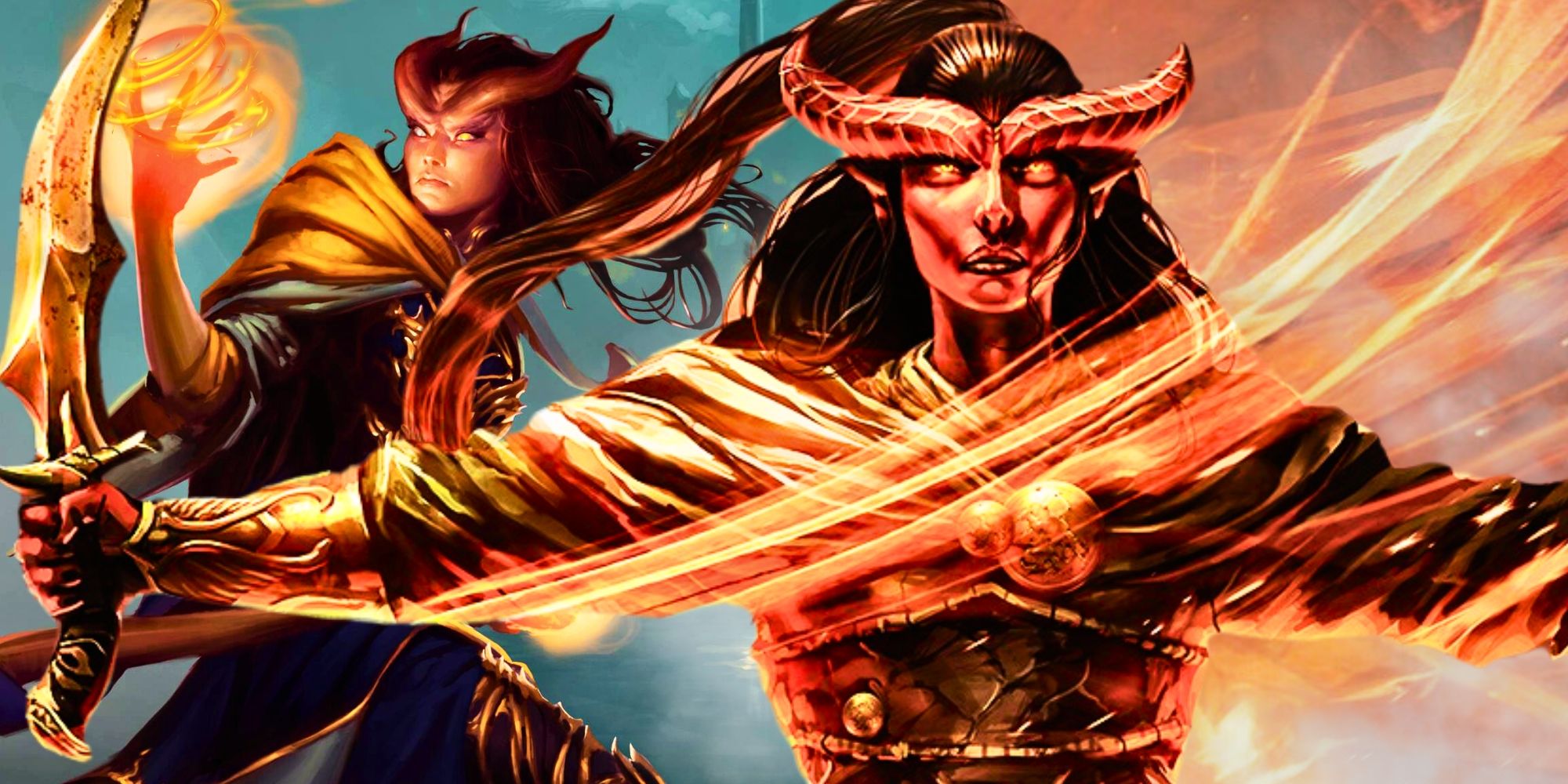
Related
10 Best Warlock Spells In D&D 5e You’ll Definitely Want To Try
Warlock has one of the most expansive spell lists in D&D 5e; not all of the spells are made equal, so spell choice will be crucial in any campaign.
10
Bigby’s Hand Is Exceptionally Versatile
5th-Level Evocation
As a cantrip, mage hand is often one of the first spells that casters will familiarize themselves with, deploying a floating spectral hand to take on various tasks. When it comes time for more demanding tasks, however, Bigby’s hand can do what mage hand can’t. With strong defensive and offensive capabilities, it’s practically a fighter of its own, and the variety of available commands give it some useful applications.
Bigby’s hand can be especially useful when an enemy is causing problems out of reach, like a powerful spellcaster attacking the party from an upper ledge. The Forceful Hand ability could push the foe off, or Interposing Hand could act as a protective barrier. Even just using it to punch is fun, as the mental image of a giant hand giving an enemy what for never fails to amuse.
9
Mass Cure Wounds Can Heal The Whole Party
5th-Level Evocation
The danger of high-level DnD combat is how quickly powerful enemies can swing things against the party, and there’s no worse feeling than seeing everyone’s HP get low and having to triage against a quickly deteriorating situation. Mass cure wounds is the perfect answer to many such sticky situations, allowing a bard, cleric, or druid to unleash healing energy in a 30-foot radius chosen within a 60-foot range.
Like regular cure wounds, mass cure wounds can also continue to scale with higher-level spell slots. As a 5th-level evocation spell, it heals 3d8 plus the caster’s ability modifier for each target, but each additional level of upcasting adds another 1d8 into the mix. Its applications might not be as varied or interesting as some other 5th-level spells, but mass cure wounds have more power to stop a total party kill than just about anything else does.
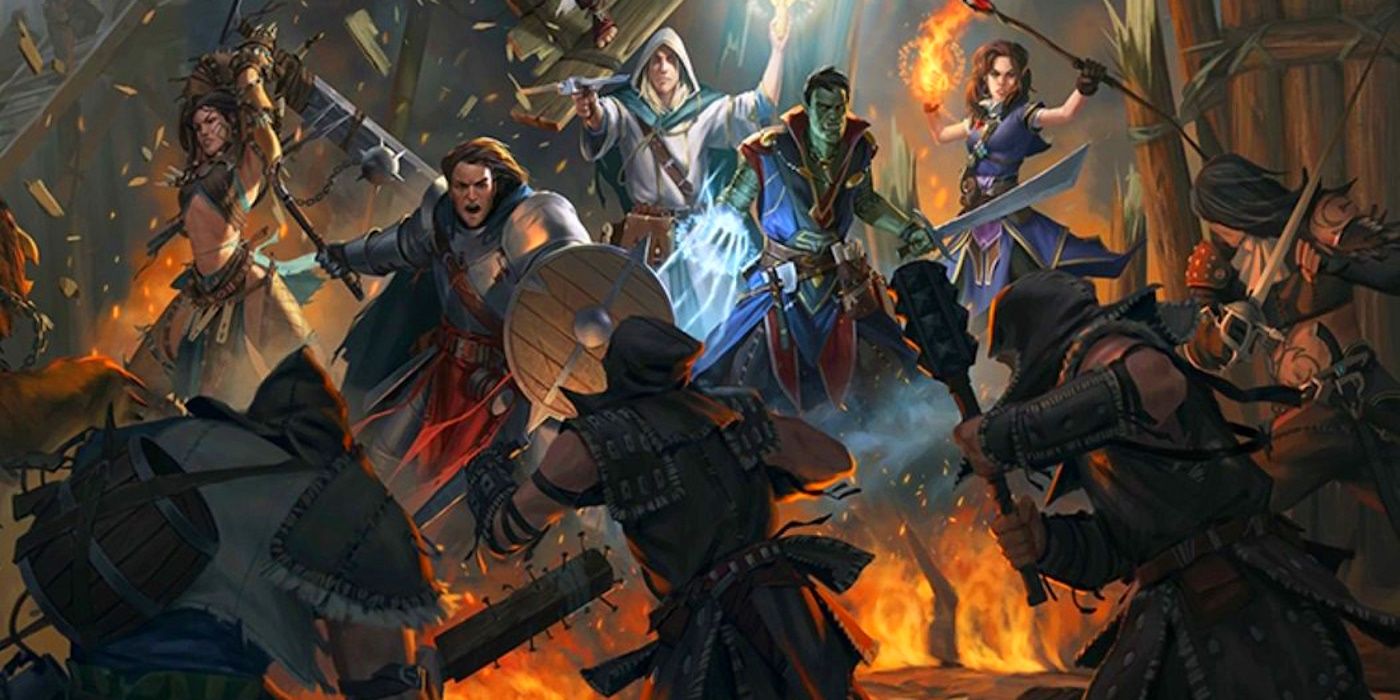
Related
D&D: What The Help Action Is (And How To Use It)
There are more things DnD players can do with their actions than just attack, but one of the most useful is often overlooked and misunderstood.
8
Greater Invisibility Is Perfect For D&D Stealth
4th-Level Illusion
Greater invisibility does what it says on the tin. The caster can turn invisible upon casting it or touch another creature to bestow the effect on them instead, an effect that will last for one minute in total as long as concentration is maintained. It’s a slim window, but it’s more than enough for a lot of tasks, especially when it comes to getting the drop on an enemy or sneaking past a single obstacle.
The big difference between greater invisibility and the 2nd-level invisibility spell is that attacking doesn’t break it, making it usable for all of an encounter. In any scenario, it’s hard to imagine a party that enjoys stealth willingly skipping over greater invisibility, as the versatility can’t be denied. It’s worth noting that the spell also affects anything on the target’s person, so there’s no gotcha of floating clothes or weapons swinging in midair.
7
Teleportation Circle Trivializes Long Distances
5th-Level Conjuration
Truly great DnD teleportation mostly comes at especially high levels, but hitting level 10 is enough to at least grab teleportation circle. This one is fairly dependent on how much a dungeon master is willing to play into the mechanic, but it allows bards, sorcerers, and wizards to create temporary teleportation circles that connect to permanently established ones found within the same plane. The caster has to already know them, so it’s not that useful for skipping ahead, but it can be a great way to bounce back to previously visited locations.
Anyone equipping teleportation circle should remember to seek out permanent circles throughout a campaign, and it can become especially useful if the player behind the character is a good note-taker. Passing up a magic item that becomes useful later or leaving an NPC with a key secret behind doesn’t have to be that big of a problem if the party can just grab it with a couple of spell uses. Returning to the temporary circle won’t be possible, but as long as an already visited permanent one is near the destination for the return trip, all will be well.
6
Animate Objects Is A Fun Damage-Dealer
5th-Level Transmutation
Animate Objects is a bit complicated, with a long list of rules about how many objects of each size can be animated and what their resulting stats are, but amid all the numbers, it’s just as fun as it sounds. Whether turning a dinner scene into a violet version of “Be Our Guest” or bringing boulders into the battle, any map can become a more exciting playground with animate objects at the ready. Used optimally, it also does impressive damage, so it can be a good choice for min-maxers as well.
The rules of animate objects set it up nicely for combat, but there’s no reason not to employ it for other purposes as well. Dungeon masters who go by the rule of cool are likely to let a caster using animate objects get away with quite a lot if the ideas are creative enough, and there’s never any harm in asking about an interesting application. It’s open to bards, sorcerers, and wizards, although trusting bards with the spell might be a bit dicey.
5
Greater Restoration Cures D&D Ailments
5th-Level Abjuration
Healing spells take care of the general wear and tear that a DnD party is likely to encounter over the course of an adventure, but when it comes to more specific afflictions, greater restoration can quickly become a must. This spell can end curses, ability score and HP reductions, charming and petrifying effects, or remove one point of exhaustion. At higher levels, encountering these kind of effects becomes increasingly likely, so any well-equipped party should probably have at least one greater restoration on hand.
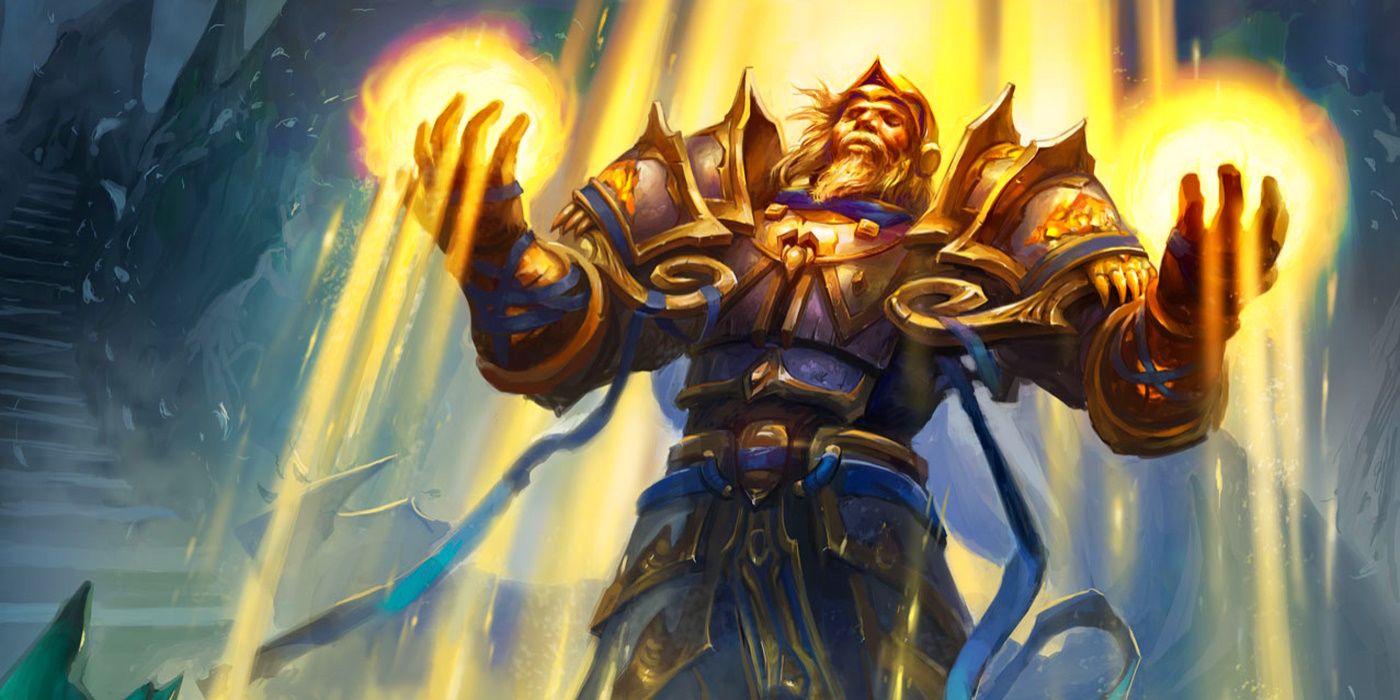
Related
Best D&D Cleric Domains
With 14 cleric subclasses to choose from, it’s no wonder some players are left scratching their heads. Here are the best D&D cleric domains on offer.
The spell is available to bards, clerics, and druids, so it’s one of the best options in DnD that wizards can’t tap into. Greater restoration consumes 100 gp worth of diamonds, so it does come at a cost. When a crucial party member finds their intelligence and charisma reduced to 1 through an enemy’s application of feeblemind, however, everyone will definitely be thankful that greater restoration is around.
4
Counterspell Can Avert Powerful Attacks
3rd-Level Abjuration
Deploying powerful spells against enemies is all well and good, but having them unleashed upon the party can be devistating. Counterspell, fortunately, is the answer to this problem. Sorcerers, warlocks, and wizards can use this spell to interrupt enemy spellcasting, potentially neutralizing a boss’s signature attack or even an enemy offering healing to their own allies.
Unlike a lot of the most exciting spells available to 10th-level DnD characters, counterspell is only a 3rd-level option, but it’s powerful enough to play with the big boys. Counterspell immediately works against spells of an equivalent level to the slot used to cast it, so using a 5th-level spell slot for it can often be worthwhile. For spells above its level, an ability check is required, but with some luck it can punch well above its weight class.
3
Scrying Can Reveal Almost Any Character
5th-Level Divination
Adventuring across the realms can make it hard to keep tabs on every friend and foe, and leaving a crucial character unattended can often come back to bite the party. It’s also not uncommon to be unable to find a target for the first time, whether they’re hiding in a secret lair or on the run from their own enemies. Scrying has the power to take care of these issues, allowing the caster to check in on virtually any creature on the same plane of existence.
As long as the target of scrying fails a Wisdom saving throw (which can be failed voluntarily for those seeking the connection), the caster can see and hear them for up to ten minutes. The odds of success are modified depending on how well the target is known, but it’s possible to pull off even if there’s no personal connection. Scrying can also be used to check in on a familiar location rather than a creature, locking in its status as an extraordinarily useful spell.
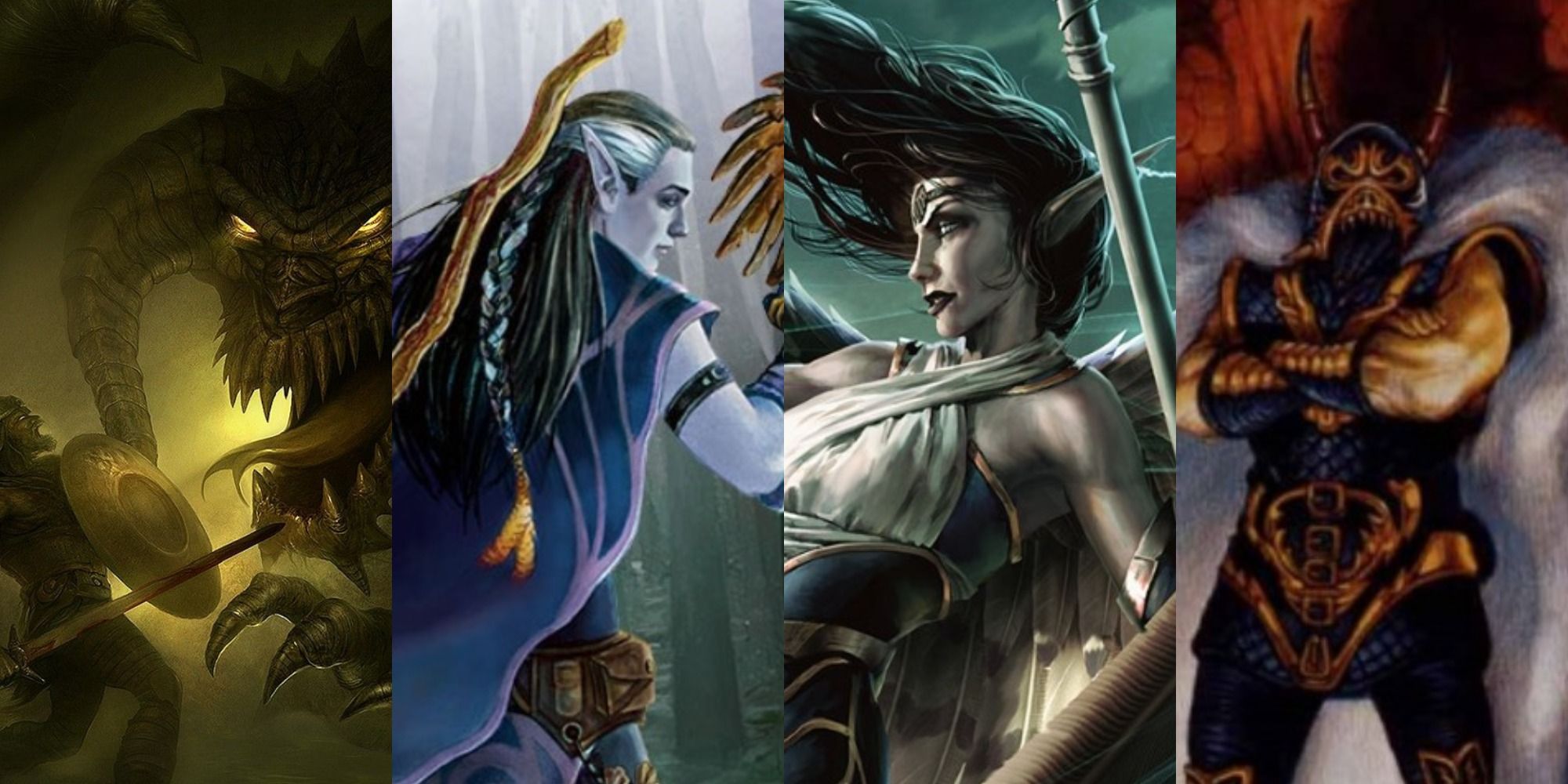
Related
Dungeons And Dragons: 10 Spells That Are Extremely Situation Specific
Dungeons & Dragons have some extremely powerful and useful spells, but some are only useful under very specific circumstances.
2
Polymorph Transforms Its Targets
4th-Level Transmutation
Polymorph is a useful tool for any DnD spellcaster capable of using it, but it’s one that truly blossoms in the hands of a creative player. Available to bards, druids, sorcerers, and wizards, polymorph can transform a target creature into a different beast of an equal or lesser challenge rating. If concentration isn’t broken, this effect can last for an hour, making it possible to render strong opponents virtually useless in combat while taking out their cronies.
If taking enemies out of the picture temporarily was the only application of polymorph, it would arguably be slightly less useful than the similar purpose of the banishment spell, but it doesn’t take much thought to see where else it could lead. Turning an enemy into a mouse if there are cats around, for example, could quickly outsource the problem of their demise. It can also be used on party members or allies who need a brief sojourn as a different creature for any variety of purposes, so it’s far more than just a DnD combat spell.
1
Wall Of Force Makes The Perfect Barrier
5th-Level Evocation
DnD 5e has a lot of “wall of [x]” spells, but they just don’t get any better than wall of force. Exclusive to wizards, this spell deploys an invisible barrier that can appear in any orientation and multiple shapes. Immune to all damage and dispelling magic (disintegrate is its one real weakness), it’s the perfect way to control the shape of a battlefield and skew the odds in the party’s favor.
Even outside of combat, the wall of force‘s possibilities are numerous. It can be deployed as a bridge to navigate dangerous terrain or a tool for fun magic tricks, especially for the type of wizards that like to show off. It can also just be fun to set it up surreptitiously and watch the unwitting smack right into it, especially if the Dungeons & Dragons party happens to have a grudge against any of the unwitting in question.
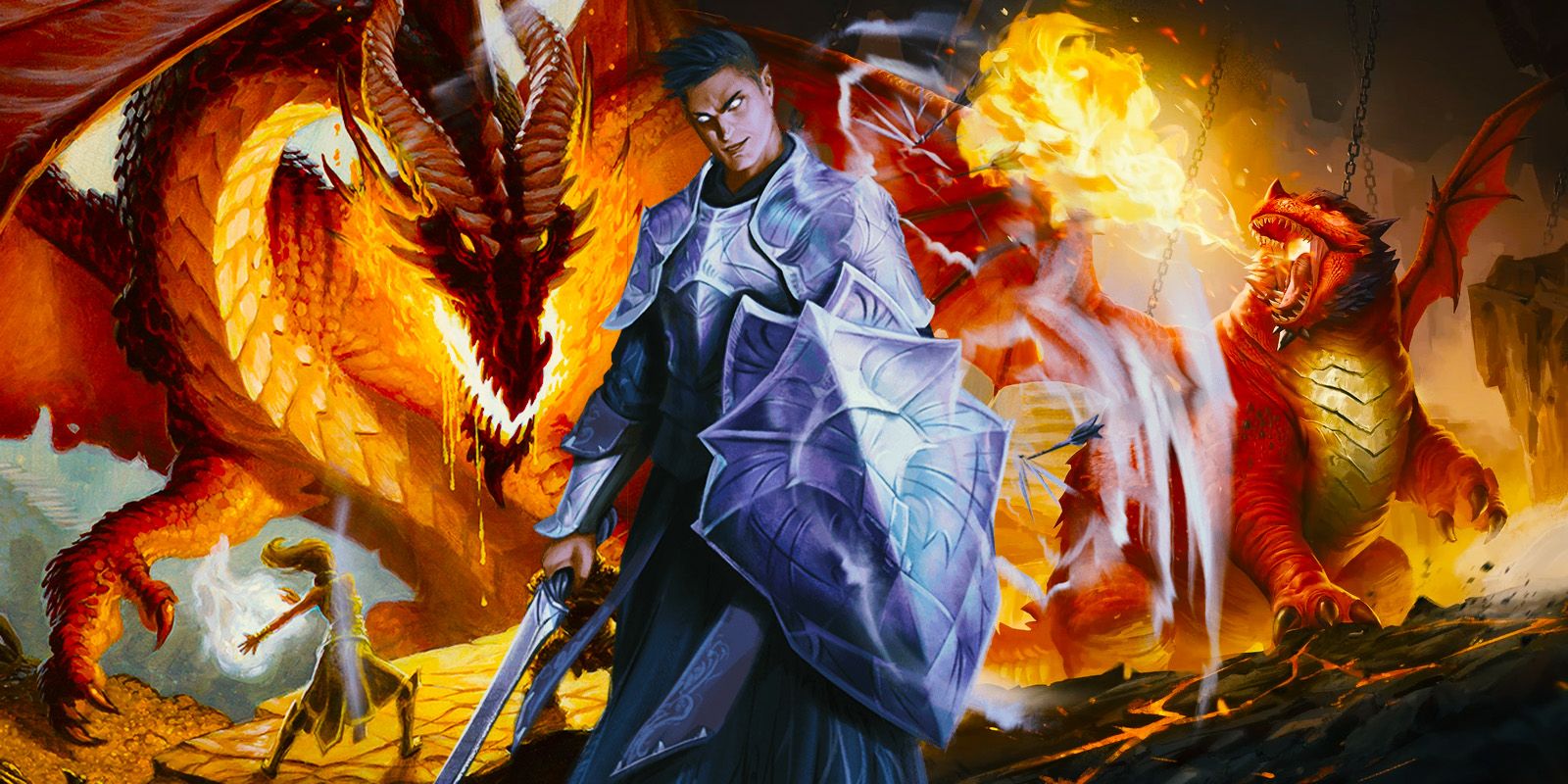
Related
New D&D Beyond Change Just Made Playing Dungeons & Dragons A Lot Worse
D&D Beyond has made sweeping changes to its online marketplace, and one of them is already unpopular. Here’s why it’s a disaster for D&D.
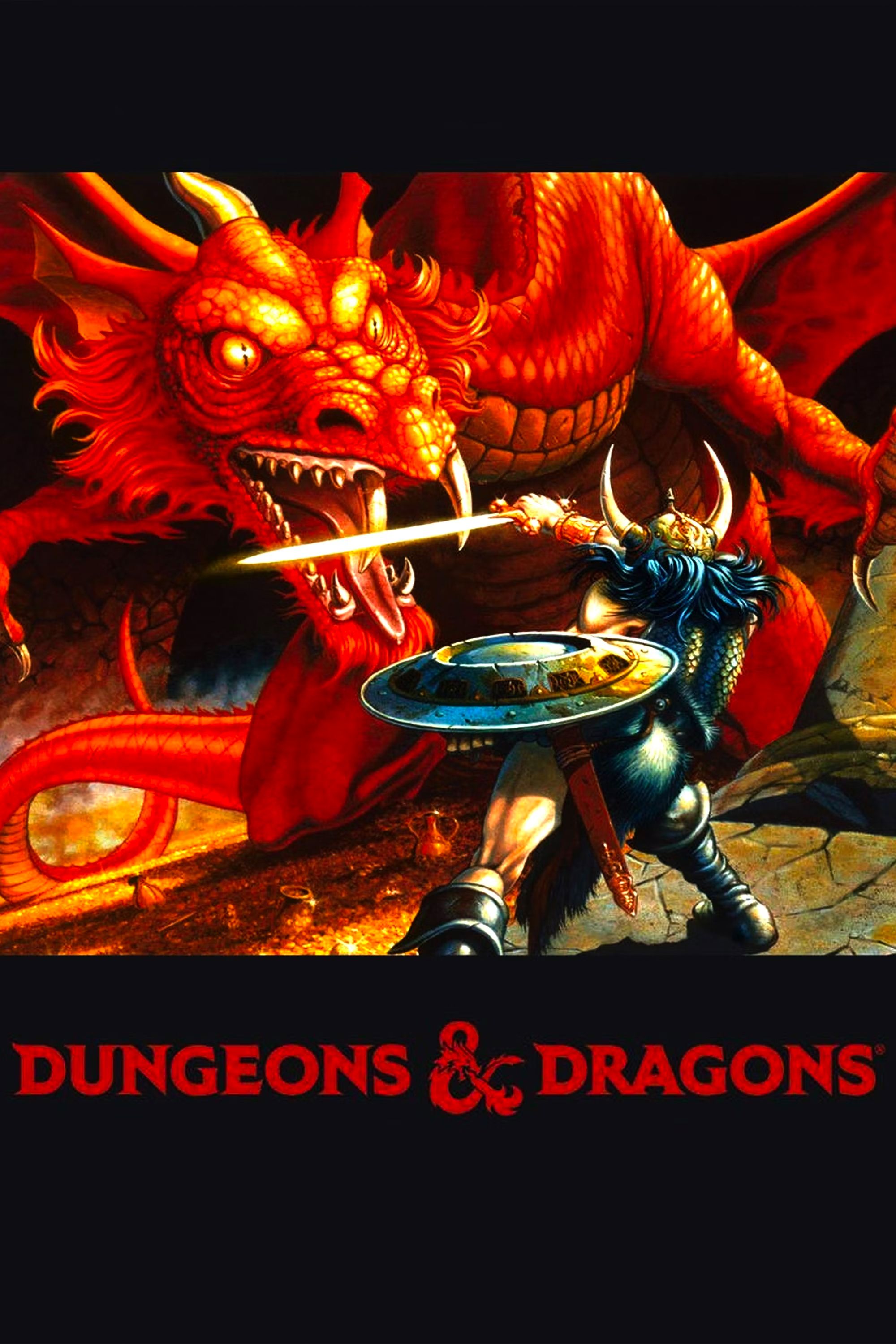
Dungeons and Dragons
- Franchise
-
Dungeons & Dragons
- Original Release Date
-
1974-00-00
- Publisher
-
TSR Inc.
, Wizards of the Coast - Designer
-
E. Gary Gygax
, Dave Arneson - Player Count
-
2-7 Players





